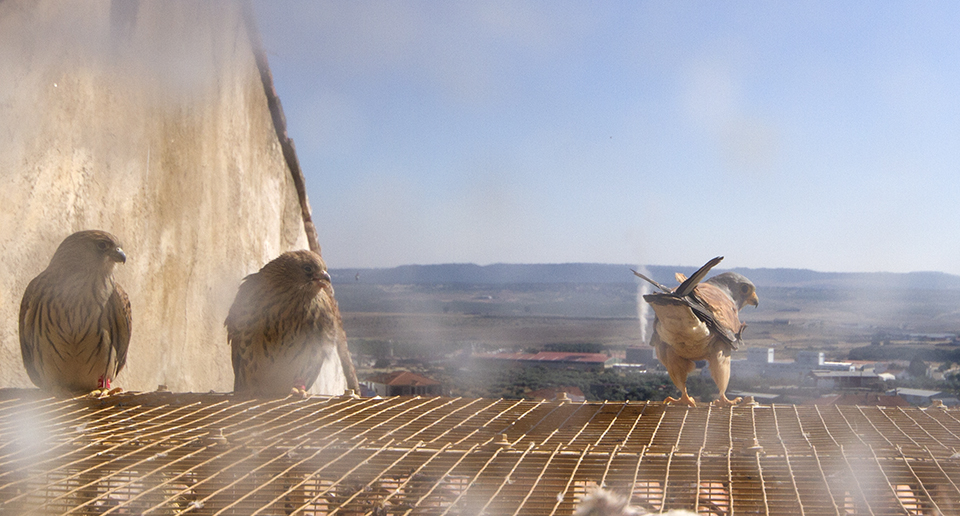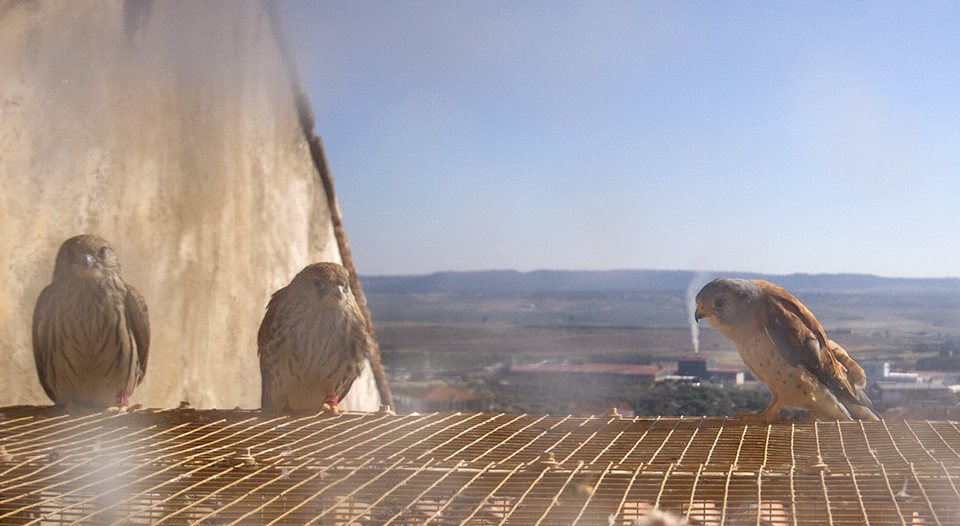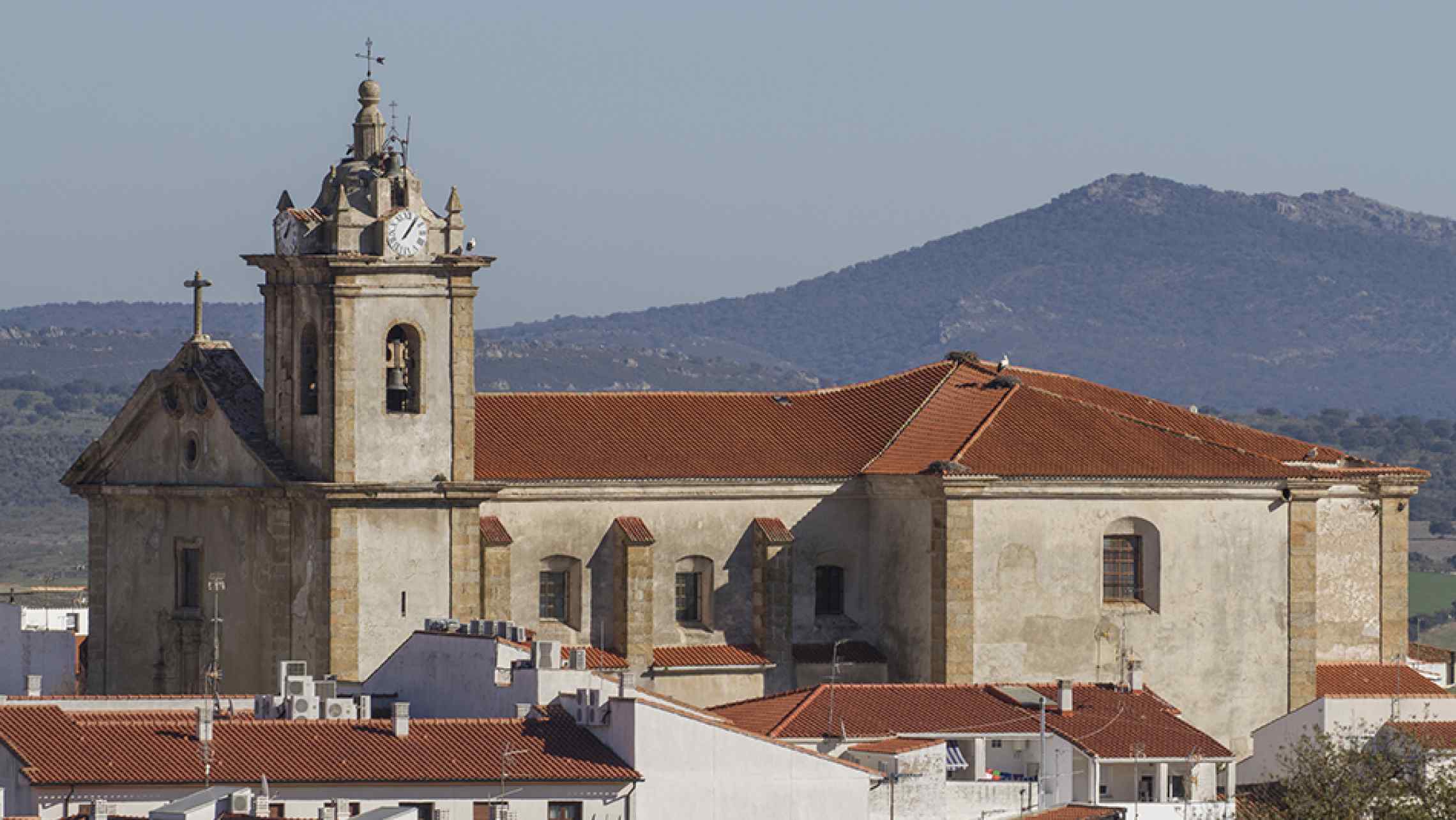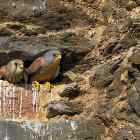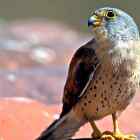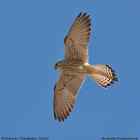In the middle of June, the release programme of lesser kestrel chicks started, as planned in Action C.3. “Captive-breeding and reinforcement of lesser kestrel colonies at risk of disappearance”. The church of San Vicente the Martyr in the SPA “Lesser kestrel colonies of San Vicente de Alcántara” was chosen, a building that in the past held an important colony, but which had disappeared completely after some work on its roof.
The 50 chicks that were released were between 18 and 20 days old and came from the breeding centre of DEMA in Almendralejo (Badajoz). Over the next two years, 80 more will be released (40 in 2019 and another 20 in 2020) to ensure the best chances of success in this action.
A release module had been previously installed in the bell tower of the church of San Vicente the Martyr, in a strategically chosen place so that it could not been seen from any angle and so that it was always in the shade. Ten artificial nest boxes had also been placed on the roof, as future resources for the birds that would be released.
The technique that was applied for the release of the chicks is called “Colony Environment” and has been designed and developed by DEMA in all its release programmes, in Spain as well as in projects implemented elsewhere in Europe. (See in the PDF the release method “Colony Environment”).
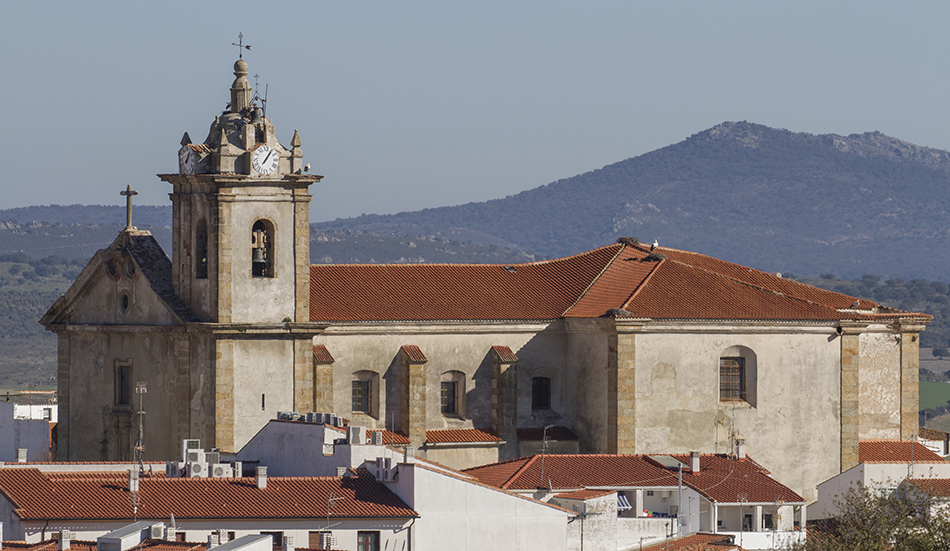
Church of San Vicente the Martyr, where the release module has been sited, above a corner of the roof and under the protection of the tower.
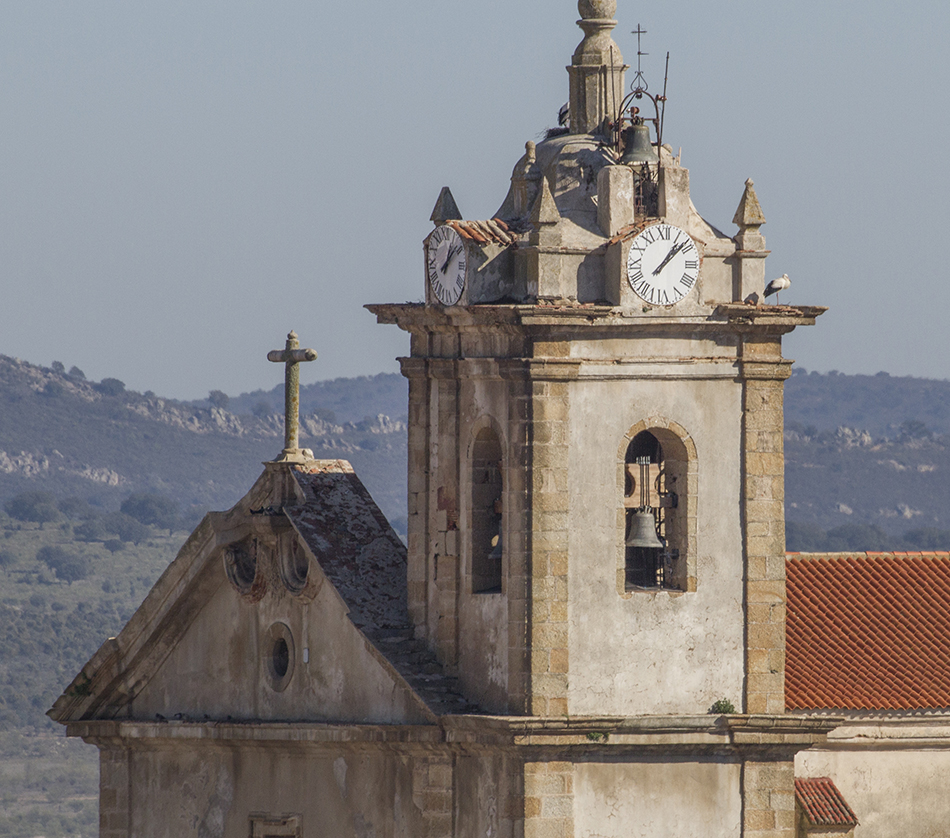
Detail of the façade in which the front end of the roof that crowns the stone cross can be seen. Behind this façade is the module.
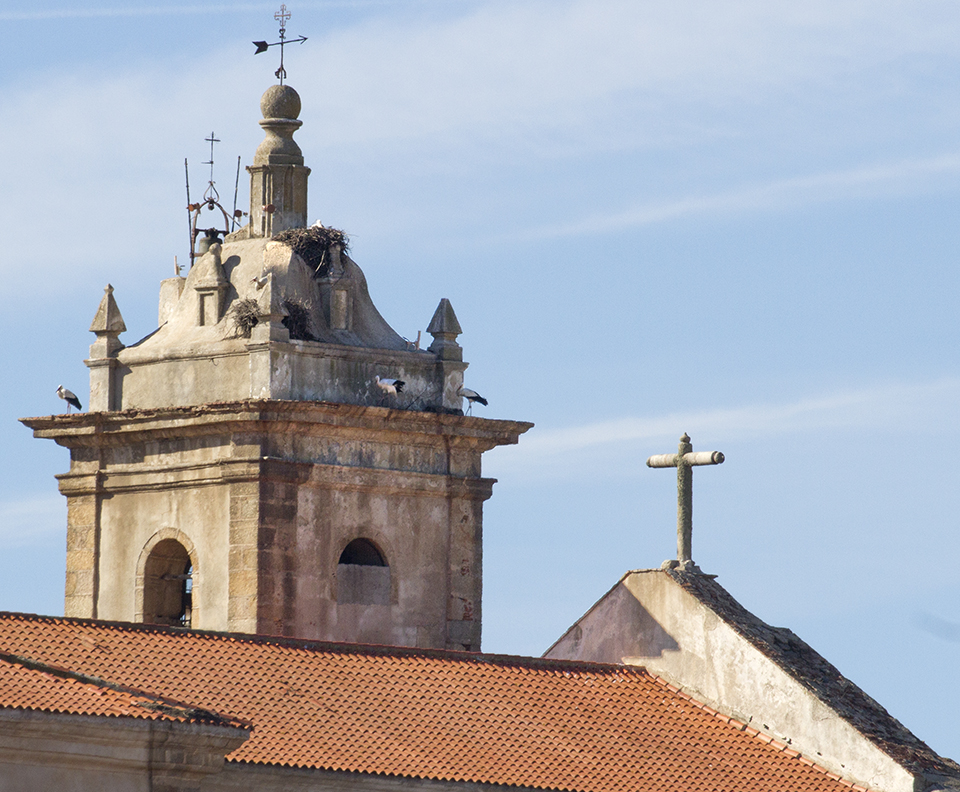
The shade given by the tower, over the roof, marks the corner where the release module is situated.
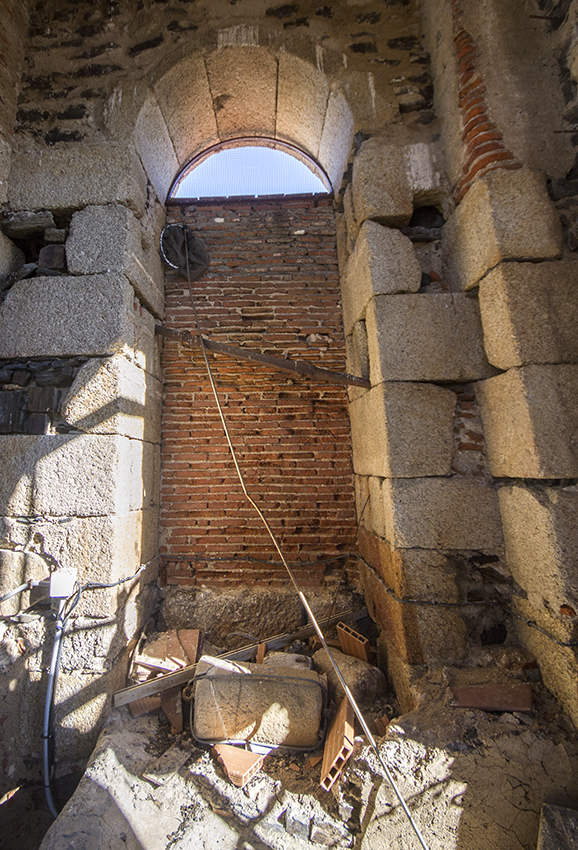
The façade on the north of the tower where one can see the window partially covered by bricks inside which is the module.
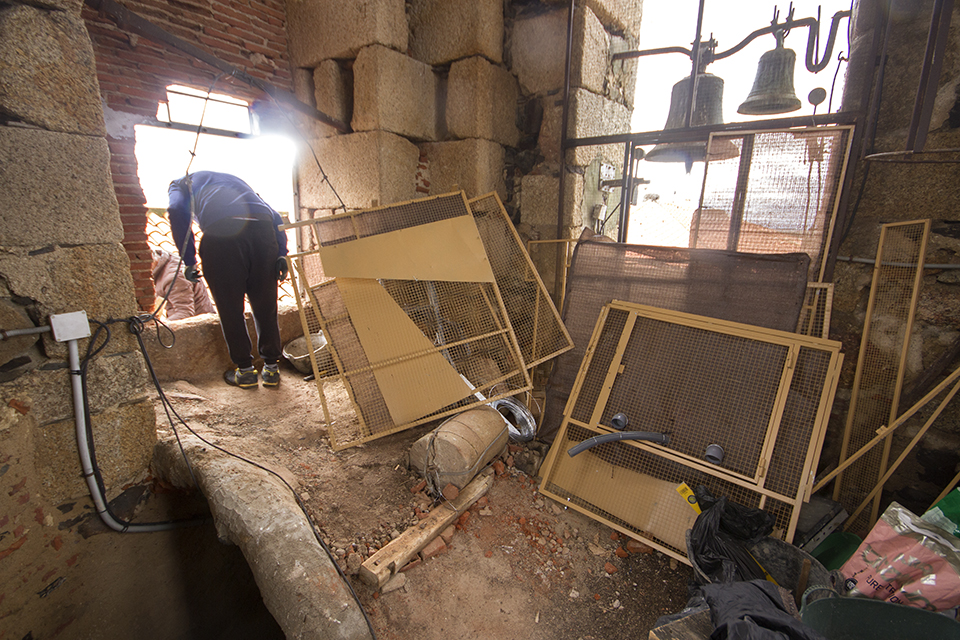
Inside the tower with the covered window. This is the space chosen to give access, in the inside and to install the release module that will be hung inside this window.
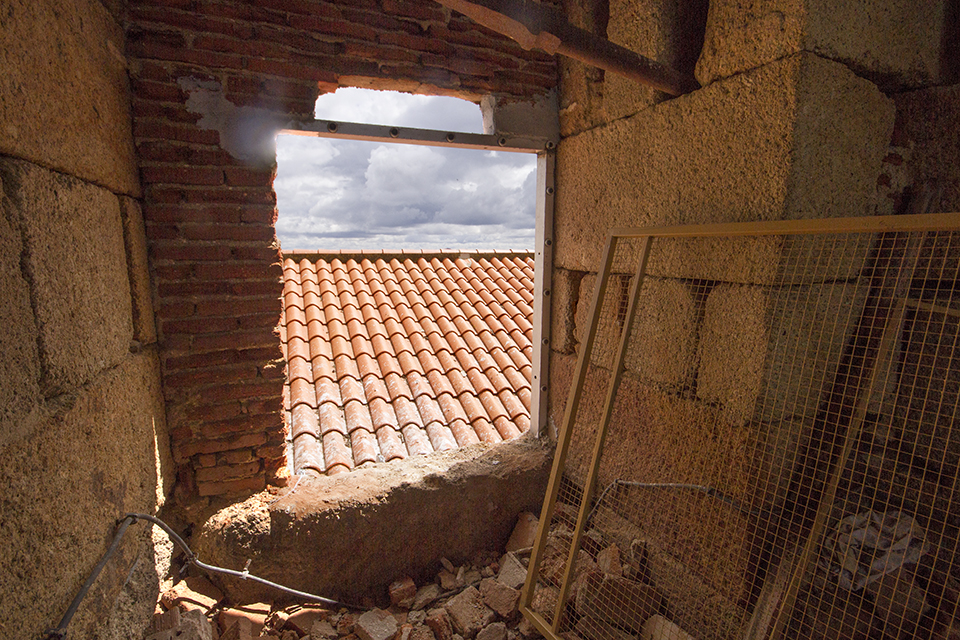
After breaking the partition, a sturdy metal frame in placed to ensure the upper part of the wall is safely supported and to facilitate access to the roof.
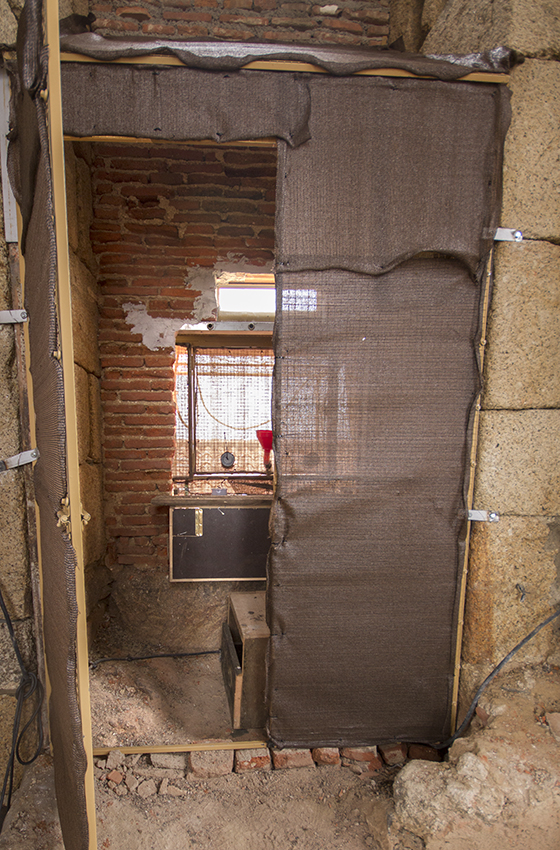
After breaking the partition, a sturdy metal frame in placed to ensure the upper part of the wall is safely supported and to facilitate access to the roof.
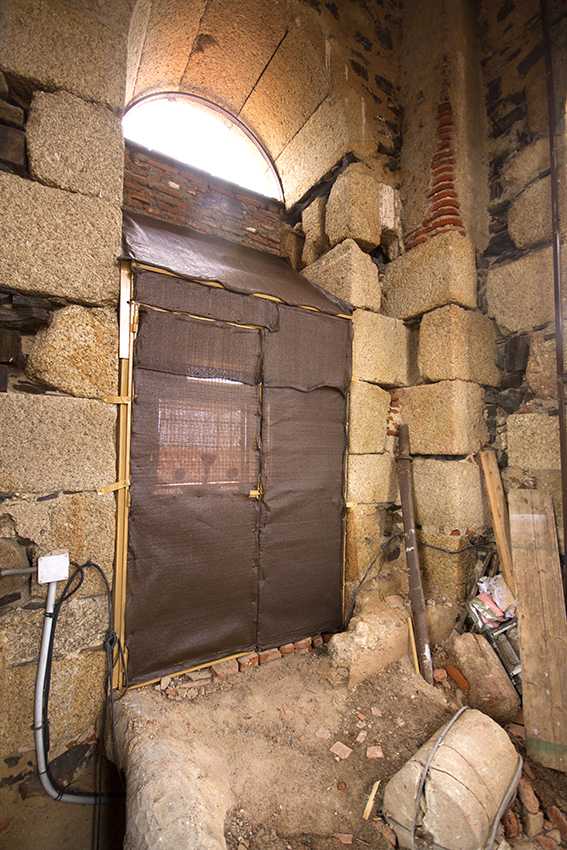
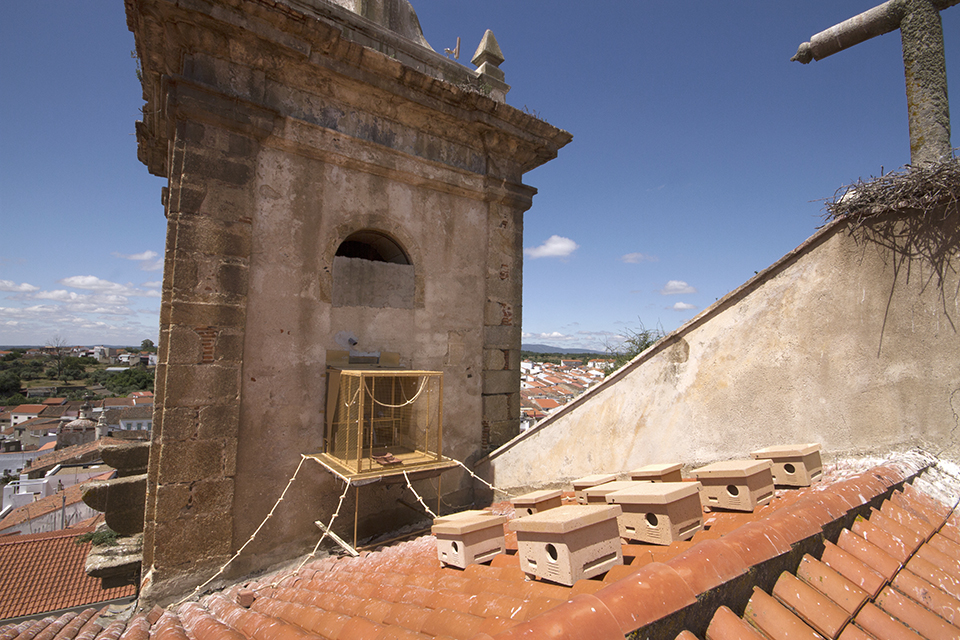
The release module and the nest boxes that have been sited nearby are the key in making the lesser kestrel believe that they hatched there. A Colony Environment is generated that improvises the creation of a lesser kestrel colony, a stimulus that is reinforced by keeping two adult birds inside the module, which act like wet nurses and thanks to their calls, make the chicks feel that they are in their own colony. Sometimes the adults may even feed the chicks helping to imprint them towards their release site.
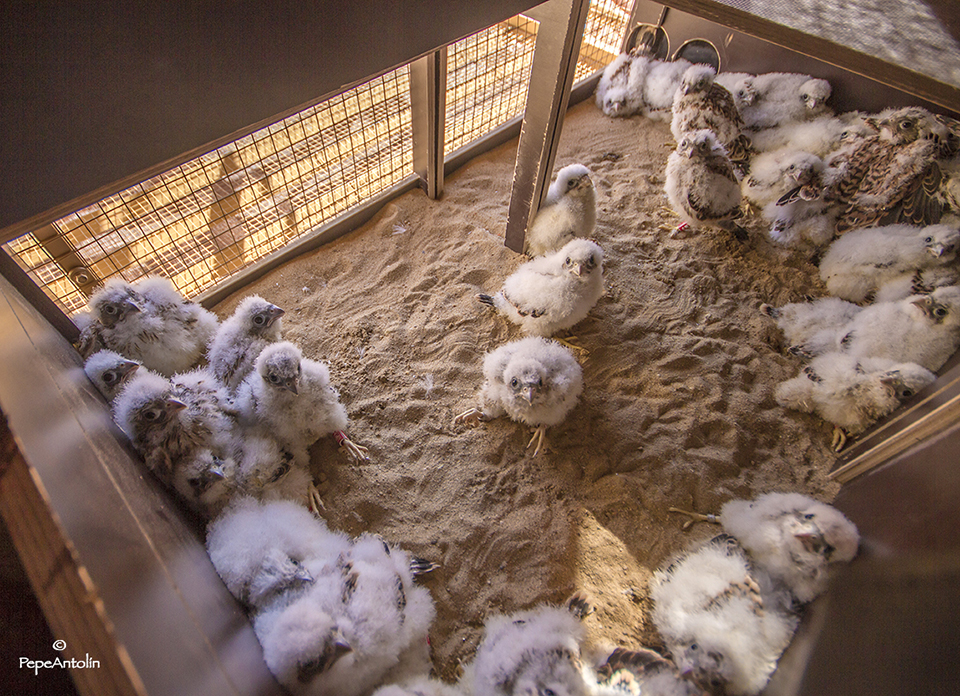
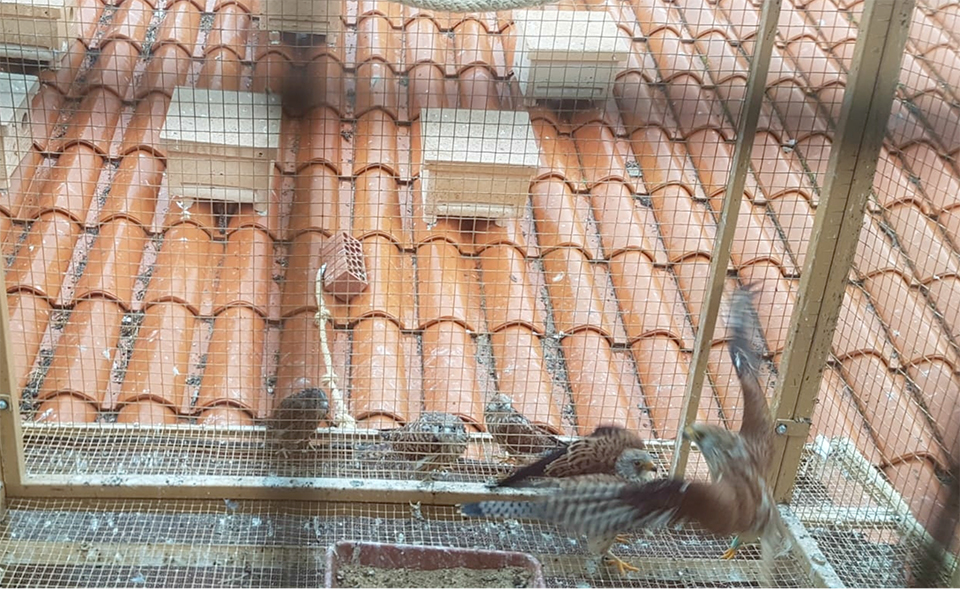
Around the module there is a shelf so that the chicks can move around in the first few days and become familiar with their surroundings. When they start to fly they will investigate all of the niches around the module. This is the reason when nest boxes are installed, they will quickly get to visit them, even roosting inside them or using them to shelter from the heat.
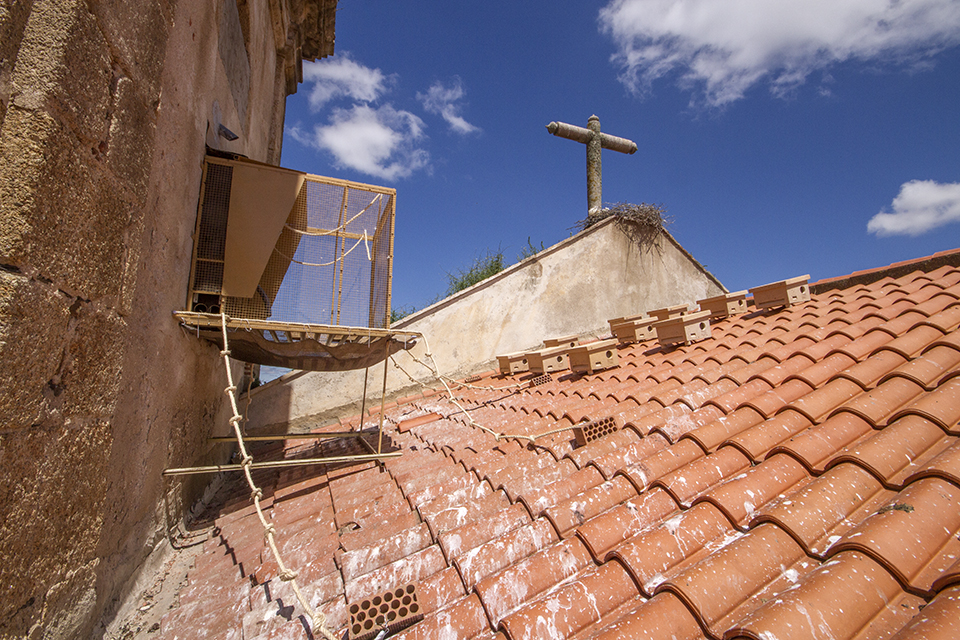
Knotted ropes, fixed to the base of the module and over the roof will allow the chicks to climb to safely if they fall, getting back onto the shelf quickly. At the base of the module is a suspended net that collects droppings, remains of food and pellets from the adults. This minimises dirt collecting on the roof and avoids gutters from becoming blocked.
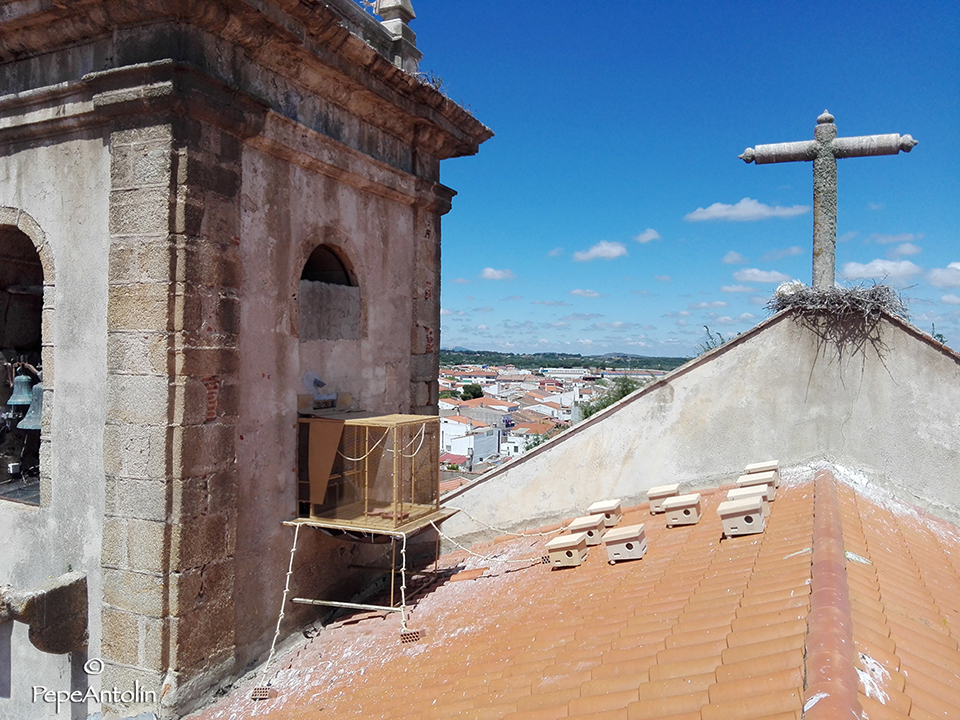
Another perspective from the summit of the roof of the module and the nest boxes situated on the roof.
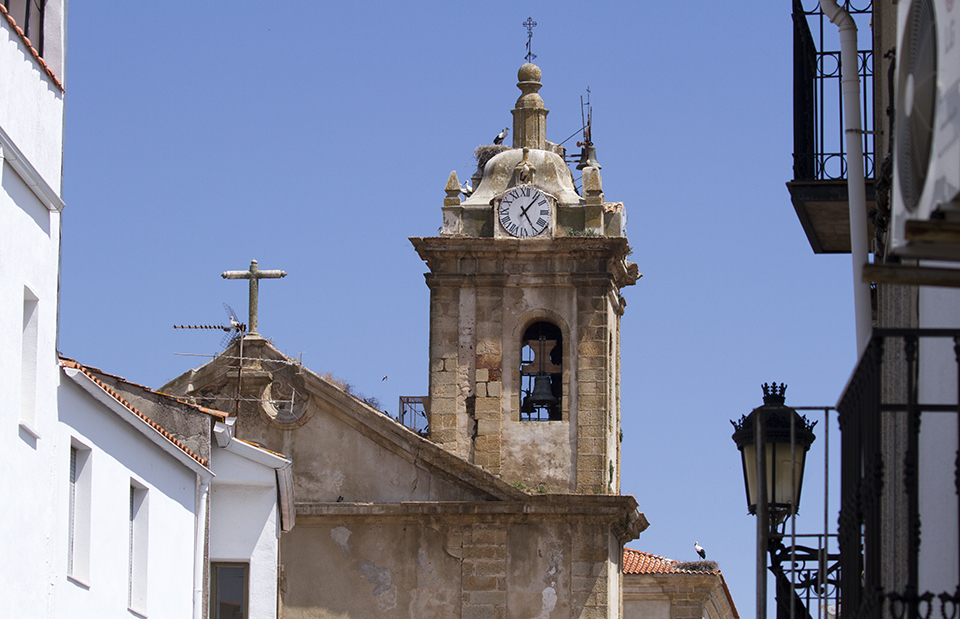
Photo of the tower using a 100 mm telephoto lens in which one can see that the module is carefully hidden behind the front of the principal façade.
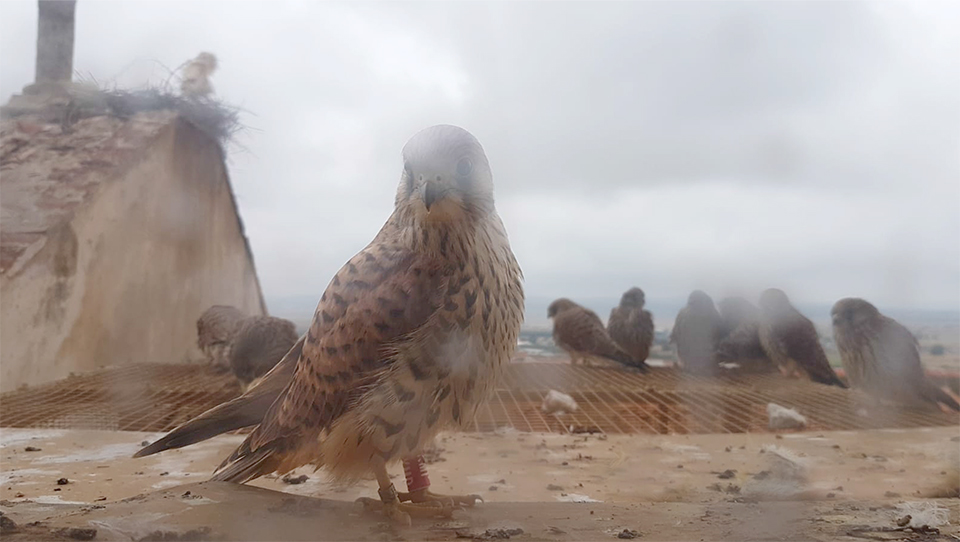
From 35 days old the chicks can start to fly. They will perch on the roof of the module where they receive food each day via a tube, the same as in the release box.
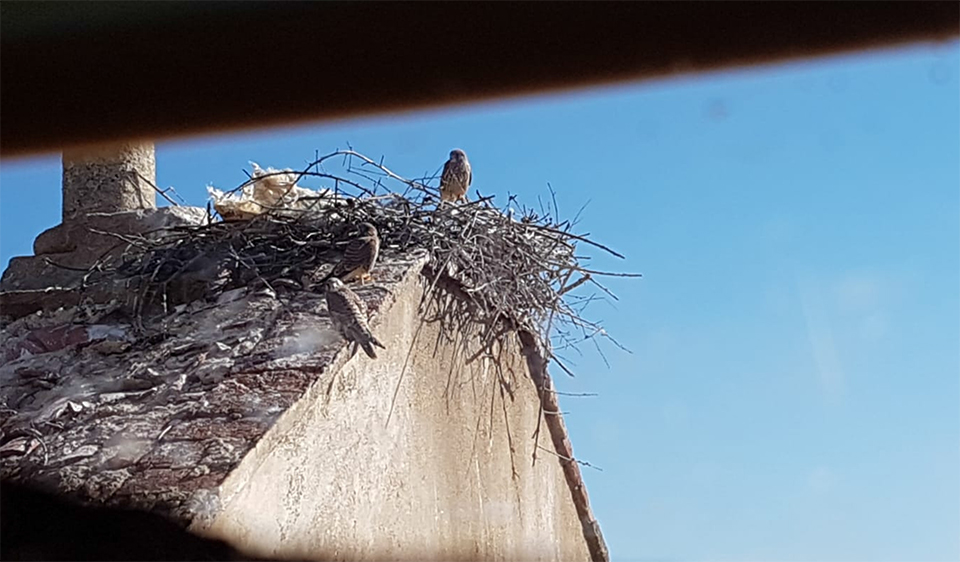
Progressively they will stay to visit the corners of the building and thus start believing that this is the place where they hatched.
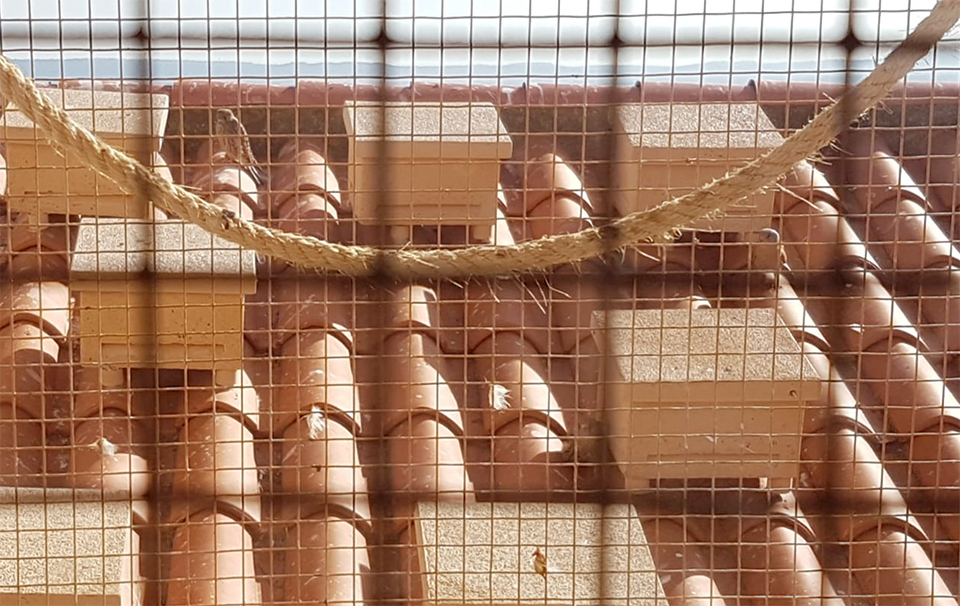
The nest boxes installed on the roof will be visited often and they will enter them from time to time. When they return the following year, they will start to use the boxes to nest in.
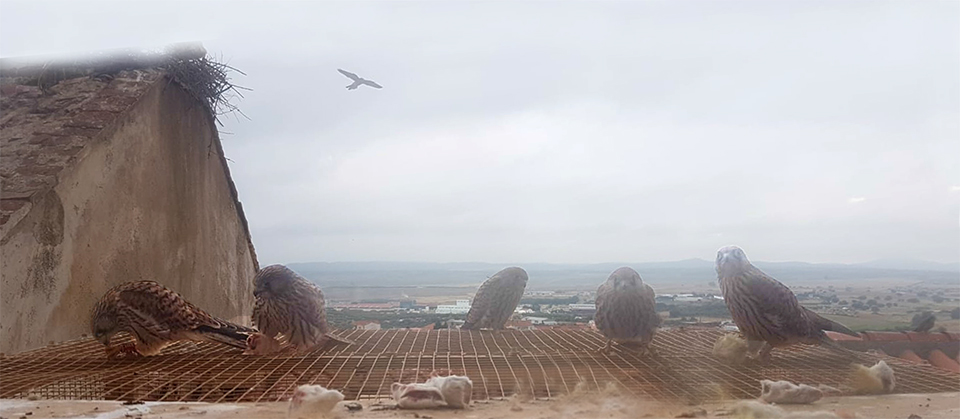
An unexpected morning of rain in this strange summer puts their recently acquired plumage to the test.
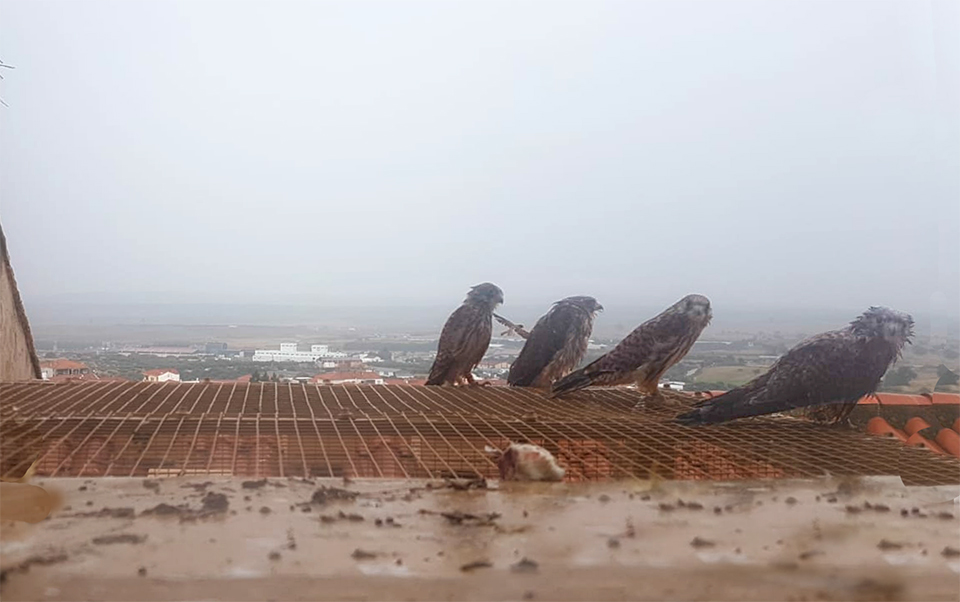
From the window situated over the release module and behind glass we can watch the chicks without them seeing us.
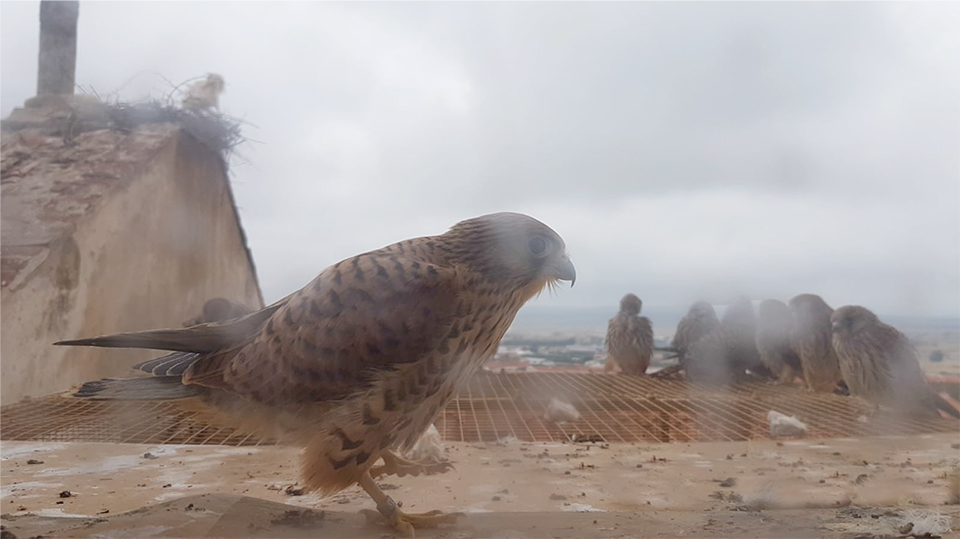
During the release process a young one-year old male from the wild population, visited the release module, attracted by the Colony Environment effect. It is probable that it is an individual from the urban centre of San Vicente where at least two pairs of lesser kestrel breed.
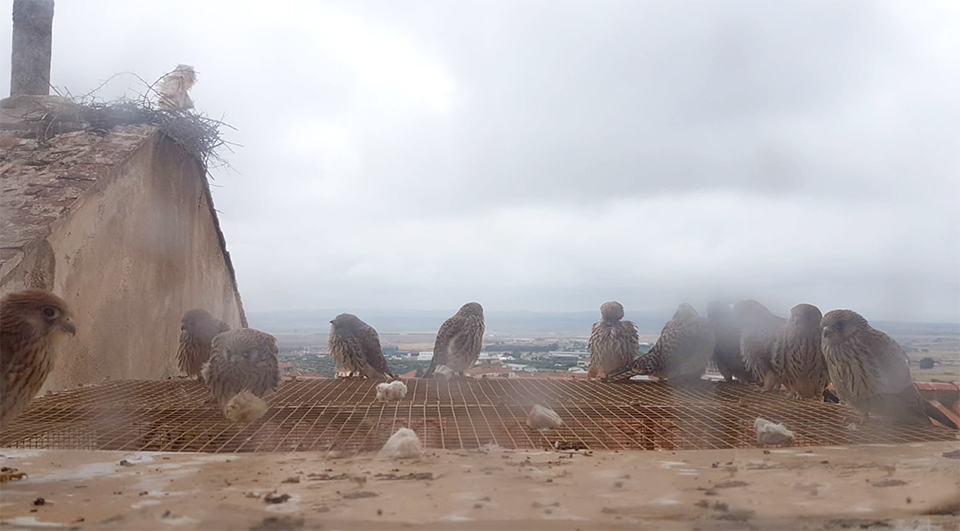
From the window situated over the release module and behind glass we can watch the chicks without them seeing us.
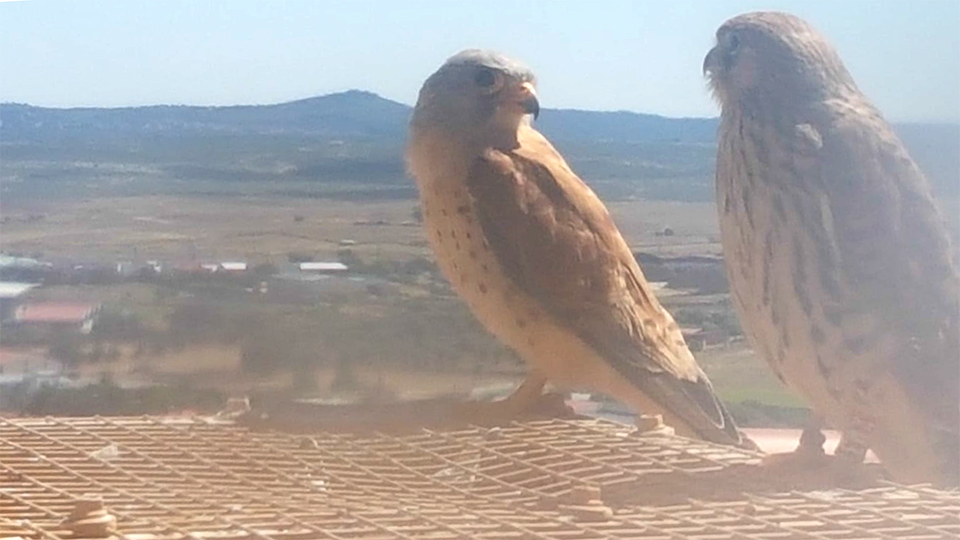
During the release process a young one-year old male from the wild population, visited the release module, attracted by the Colony Environment effect. It is probable that it is an individual from the urban centre of San Vicente where at least two pairs of lesser kestrel breed.
